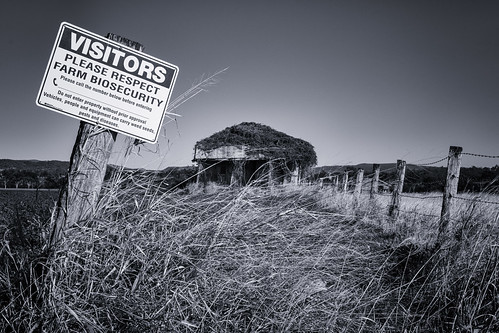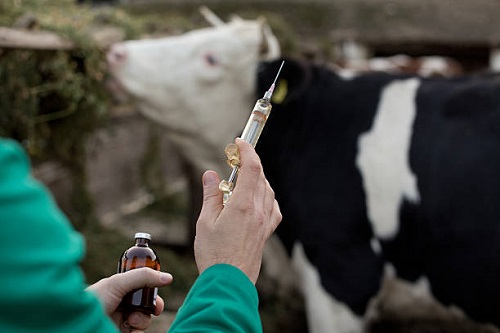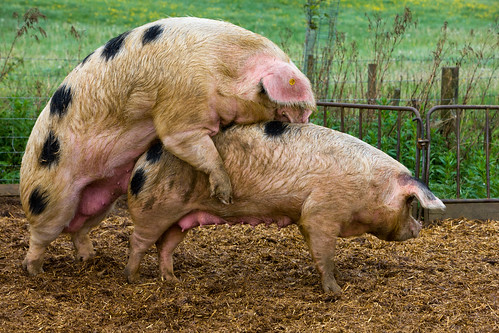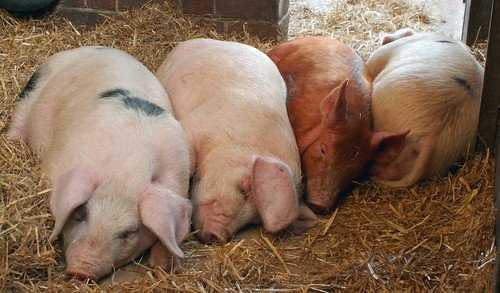Health management and biosecurity are very important in livestock production. Both need to be carried out to prevent unnecessary mortality, revenue loss due to death and raising unwholesome animals for human consumption.
What is Biosecurity?
Biosecurity is the term used to describe a general strategy or a succession of measures used to prevent infectious diseases on a farm. Maintaining an effective biosecurity program, using good hygiene practices, and following a comprehensive vaccination program are essential for disease prevention.
A comprehensive biosecurity program involves a sequence of planning, implementation, and control. Since it is impossible to sterilize a shed or premises, the key to successful biosecurity is to reduce the potential for pathogen introduction and to prevent the spread of pathogens within the farm and its facilities.
Standard Biosecurity Measures for Livestock Farms
The following are standard and effective biosecurity measures that a livestock farm could adopt:
- Limit non-essential visitors to the farm. Keep a record of all approved visitors and their previous visits to the farm and/or their contact with birds. Require a minimum downtime – for instance, 72 hours – of “no bird contact” before a visitor can enter the farm.
- Supervisors and technical staff should always visit the younger herds before the older herds. If they visit several farms in one day they have to program the youngest at the beginning and then the others, according to the age of the birds. If they visit a farm with a suspected or known disease, then they should not go to other farms in order to avoid the transfer of a pathogenic organism to them.
- Avoid contact with other birds, especially backyard chickens.
- If equipment is to be brought in from another farm, it should be thoroughly cleaned and disinfected before arriving at your own farm, and again upon arrival there.
- Have toilets or spraying facilities for vehicle wheels at the entrance to the farm. Allow only the necessary vehicles to enter the site.
- Farms must be fenced.
- Keep farm doors and shed doors closed at all times.
- In no way should other domestic birds be kept on the same farm. Farm animals other than birds must be separated and have a different entrance to the poultry house.
- Pets should not be allowed to enter or move around poultry houses.
- All farms must have a vermin control plan that includes frequent monitoring of rodent activity. Bait for rodents should be kept in well-identified boxes.
- The area around the ships should be free of vegetation, debris and unused equipment, which could harbor vermin.
- Fix feed leaks from silos and feed lines and clean up spills.
- Farms must have toilets and hand washing facilities separate from the poultry house.
- Ideally, poultry farms should have been built away from other poultry farms and from rivers and ponds to limit any exposure to wild birds.
- If entry of any equipment into the farm is required, it must first be disinfected according to the company protocol for biosecurity.
- Regarding the feed entrance, it is best to deliver it to a central container from outside the perimeter fence of the farm and then transfer it to the silos of each pen.
- At the entrance to the farm, a facility dedicated to changing clothes and shoes should be located. Ideally, a mandatory hot water shower policy and 5 minutes timed with the necessary disinfecting agents.
- Have hand sanitizing facilities at the entrance to each warehouse.
- Provide well-groomed footbaths at the entrance of each pen.
- Place all utility meters – gas, water, and electricity – outside the farm to prevent farm staff from having to enter it.
- Outdoor foot baths must be covered to avoid dilution of the disinfectant by rain and environmental contamination.
- Clean shoes before using a foot bath to remove organic material, which could inactivate the disinfectant.
- The shoe disinfectant must be broad in activity and fast acting.
- It is recommended that throughout the farm there are only chickens of a single age in order to reduce the risk of pathogens and facilitate vaccinations.
- The chicks must come from breeders of the same age and that have had the same vaccination program.
- If the litter is reused, all moistened or caked must be removed and heat must be provided in time to release any accumulated ammonia and promote heating it before the entry of a new herd.
- The emptying of the pens must be complete before the arrival of the new batch.
- The chicken collection teams must be provided with protective clothing and the material – cages and wheelbarrows – be washed and disinfected before entering the farm, especially if the emptying is not complete.
- At the end of each breeding remove all the birds from the farm.
- Apply an insecticide, if possible, immediately before removing the litter and for the pen to cool down. Major insect infestations may require additional insecticide application after the disinfection process has been completed.
- Maintain rodent control program after removal of chickens.
- Remove all unused feed from feeders, hoppers and pipes.
- Carefully consider the health status of the previous flock before transferring leftover feed to another farm to be used for other chickens.
- Remove the entire litter with covered vehicles.
- Clean all dust and debris from the building, paying special attention to less obvious places such as air intakes, fan boxes and the top of walls and beams.
- Dry clean any equipment that cannot be washed directly – electrical equipment, for example – and cover it completely to protect it from the washing process.
- With the farm now fully cleaned and disinfected, they must wait at least 3 days before a new herd enters.
- The drinkers should be drained at the end of each brood and cleaned with an approved disinfectant before entering the next herd. Make sure their lines have been completely drained to remove any residue and fill them with clean water before entering the next herd.
- Test the water at least annually to ensure its mineral levels and microbial quality.
- Conduct frequent biosecurity audits on each farm – the entire facility – to ensure compliance with company expectations for cleanliness, disinfection, and biosecurity.
What is Sanitation?
The most important factor in keeping birds healthy is good hygiene. Herds from healthy parents and good hatchery hygiene go a long way in starting off with disease-free chicks, but farm sanitation is vitally important to keeping chickens healthy throughout their growth.
Farm sanitation doesn’t just mean choosing the right disinfectant. Its key is effective cleaning since all disinfectants are inactivated by organic material.
Steps for Effective Farm Sanitation
The following points are the basic steps for effective farm sanitation:
- In buildings with side curtains, special attention should be paid to cleaning them, both inside and outside.
- The pen must be washed from one end to the other, paying special attention to the fans and air inlets, and doing it towards the end with the best drainage. No water basin should be left around the house and the farm must have adequate drainage that meets local environmental and legal requirements.
- The pen’s control rooms must be carefully cleaned as water can damage electrical systems. The use of powerful air blowers, vacuum cleaners and cleaning with a damp cloth – the latter when possible and with safety in mind – can be useful in such areas.
- If there is a water storage tank, open it whenever possible and clean it with a detergent.
- Completely drain the sprues and the header tank before adding the cleaning solution.
- Removable equipment must first be cleaned with a detergent and then thoroughly disinfected.
- Any equipment or material that cannot be cleaned should not be reused for the next upbringing, but rather disposed of safely.
- Open the water drainage holes and wash all the interior surfaces of the house and the fixed equipment with a general detergent by means of a pressure washer. If a foam or gel is used, allow the recommended soaking time to allow the product adequate time to work. The process should be carried out by default, from the ceiling to the floor of the warehouse. If the fans are on the ceiling they should be washed before it.
- External areas such as gutters, fan boxes, driveways, and concrete areas should also be cleaned, removing all trash or agricultural organic matter. Unused and unnecessary equipment should be removed from the farm.
- Carry out facility repairs at this point and recap open drain holes for flushing.
- The exterior concrete areas and the ends of the nave must be completely washed.
- Drying after disinfection is advantageous, and heat and/or fans can be used to speed up this process.
- Staff areas – dining rooms, locker rooms, and offices – should also be thoroughly cleaned. All footwear and clothing should receive a complete wash and disinfection at this time.
- When choosing which disinfectant product to use, check the label to verify the recommended temperature(s) for optimum effectiveness. Also, check its effectiveness against bacteria and viruses.
- Apply an effective broad-spectrum disinfectant using a pressure washer. Thoroughly soak all interior surfaces and equipment from top to bottom. Fan housings, air inlets, and joists and posts require special attention.
- After disinfection, biosecurity controls should be re-established at the entrance to the house.
- Adequate downtime between flocks will increase the effectiveness of the hygiene program.
- To monitor the effectiveness of the sanitation program, visual inspection and microbial sampling using swabs are suggested.
- The effectiveness of the sanitation program can be measured by quantitative laboratory tests.
- Sterilization of facilities is not realistic, but microbiological control can confirm that unwanted organisms such as salmonella have been removed.
- A documented audit that includes microbiological monitoring and attention to the results of subsequent flocks can help determine the effectiveness and value of the sanitation program.



